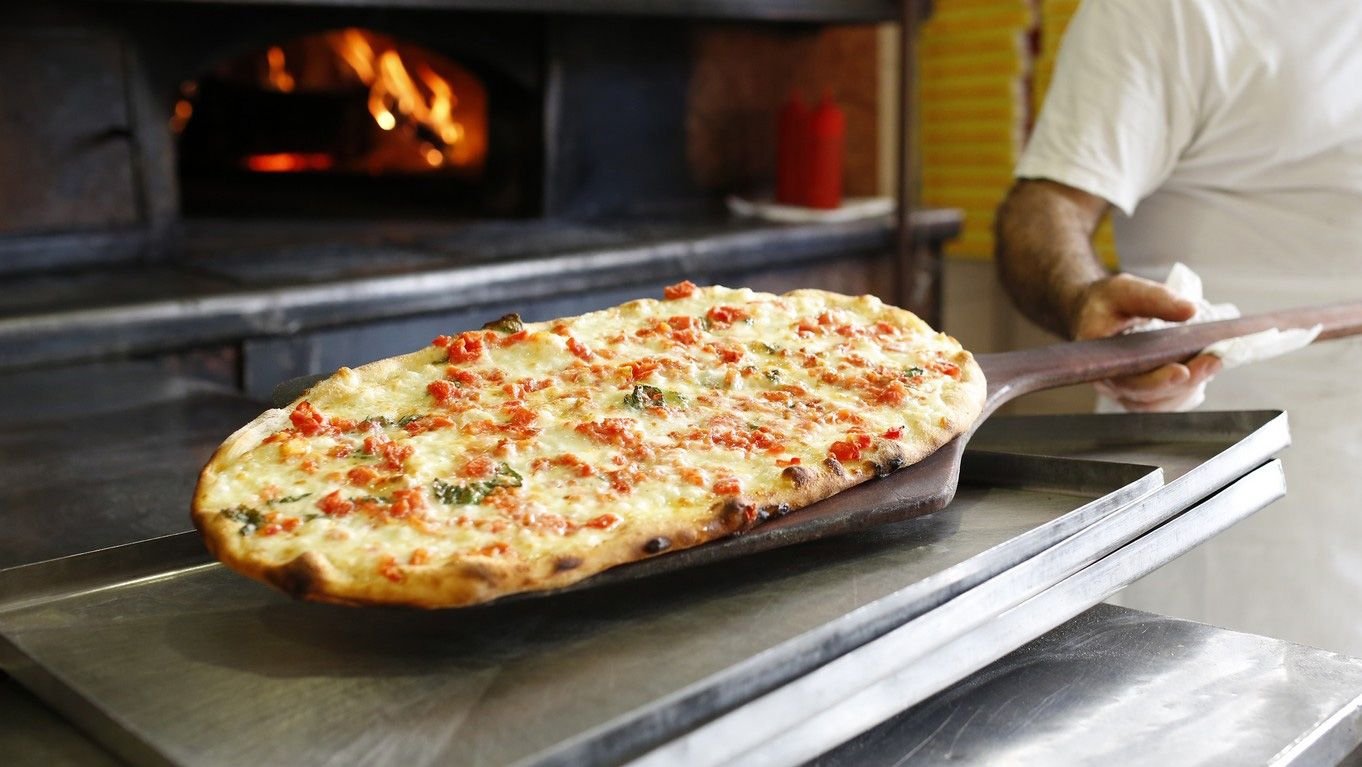Italian Margherita pizza, with its simple yet elegant combination of fresh ingredients, holds a special place in the hearts of pizza enthusiasts worldwide. This article explores the history, ingredients, preparation methods, and cultural significance of Margherita pizza, celebrating its status as a timeless symbol of Italian culinary excellence.

Origins and Historical Significance
The Margherita pizza’s origins date back to the late 19th century in Naples, Italy. Legend has it that in 1889, renowned Neapolitan pizzaiolo Raffaele Esposito created the pizza to honor Queen Margherita of Savoy during her visit to the city. The pizza was designed to showcase the colors of the Italian flag—red (tomatoes), white (mozzarella), and green (basil)—symbolizing unity and patriotism.
Key Ingredients of Margherita Pizza
Pizza Dough:
Margherita pizza begins with a classic Neapolitan pizza dough, characterized by:
- Tipo 00 Flour: High-protein flour that creates a light, chewy crust.
- Yeast: Provides leavening for a fluffy texture.
- Salt and Water: Essential for flavor and dough hydration.
- Olive Oil: Adds richness and helps in dough elasticity.
Tomato Sauce:
- San Marzano Tomatoes: Prized for their sweetness, low acidity, and vibrant red color. These tomatoes are typically used in Margherita pizza sauce for their superior flavor.
- Garlic and Basil: Simple seasonings that enhance the tomato sauce’s aroma and taste.
Cheese:
- Mozzarella: Fresh buffalo mozzarella (mozzarella di bufala) or cow’s milk mozzarella (fior di latte) is traditionally used. It’s known for its creamy texture and mild flavor that balances the acidity of the tomatoes.
Fresh Basil:
- Basil Leaves: Fresh basil leaves are scattered over the pizza before or after baking, imparting a fragrant herbal aroma that complements the tomato and cheese.
Preparation and Baking Process
Creating an authentic Margherita pizza involves meticulous attention to detail and adherence to traditional methods:
- Preparation: Stretch the pizza dough into a thin, round shape using gentle hands or a rolling pin. Place it on a pizza peel dusted with flour or cornmeal for easy transfer.
- Sauce and Cheese: Spread a thin layer of tomato sauce over the dough, leaving a small border. Distribute slices or chunks of mozzarella evenly across the sauce.
- Basil Garnish: Tear fresh basil leaves by hand and scatter them over the pizza. This step is crucial for infusing the pizza with a fresh, aromatic flavor.
- Baking: Preheat a wood-fired pizza oven to around 800-900°F (425-475°C). Slide the pizza onto the hot pizza stone inside the oven and bake for 60-90 seconds, rotating if necessary, until the crust edges (“cornicione”) are puffed and lightly charred, and the cheese is melted and bubbly.
- Finishing Touches: Remove the Margherita pizza from the oven using a pizza peel. Drizzle with extra virgin olive oil and sprinkle with a pinch of sea salt if desired.
Cultural Significance and Global Appeal
Margherita pizza is not just a culinary delight but also a cultural icon that represents:
- Neapolitan Tradition: It embodies the essence of Neapolitan pizza-making, recognized by UNESCO as an intangible cultural heritage.
- Simplicity and Elegance: Its minimalist approach to ingredients celebrates the quality and freshness of each component.
- Worldwide Popularity: Margherita pizza’s popularity has transcended Italy’s borders, becoming a beloved staple in pizzerias and kitchens worldwide.
Enjoying Margherita Pizza
Margherita pizza is best enjoyed immediately after baking, allowing diners to savor its vibrant flavors and contrasting textures:
- Pairing Suggestions: Serve with a crisp Italian white wine or a light, fruity red wine. Alternatively, enjoy with a refreshing salad of mixed greens dressed with balsamic vinaigrette.
Conclusion
Italian Margherita pizza epitomizes the perfect marriage of simplicity, quality ingredients, and centuries-old culinary tradition. Its creation requires skill and respect for Neapolitan pizza-making techniques, ensuring each slice delivers a harmonious blend of flavors that captivates the palate. Whether enjoyed in Naples’ historic pizzerias or recreated at home, Margherita pizza continues to enchant pizza lovers worldwide with its timeless appeal and cultural significance as a symbol of Italy’s rich gastronomic heritage.











